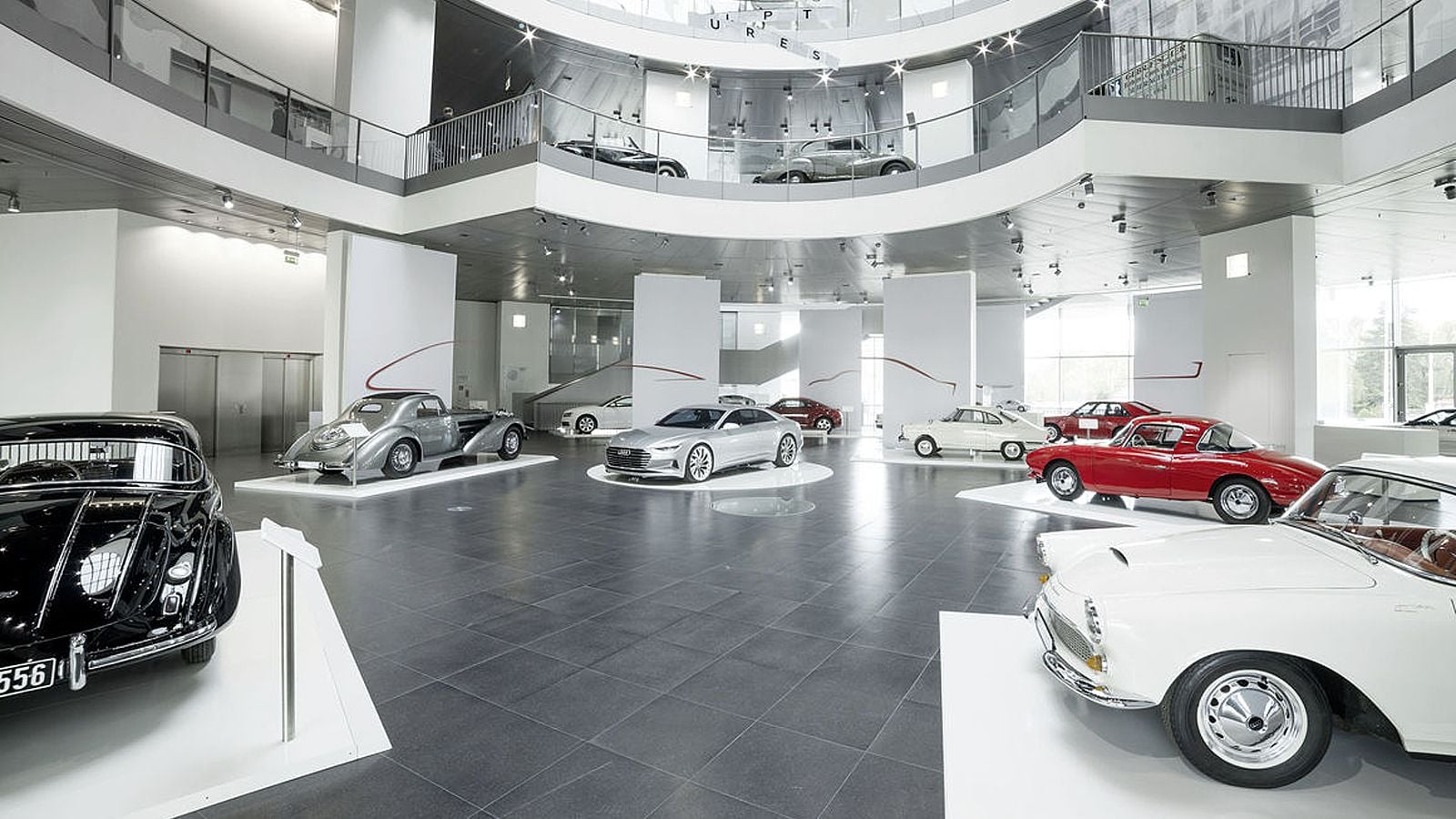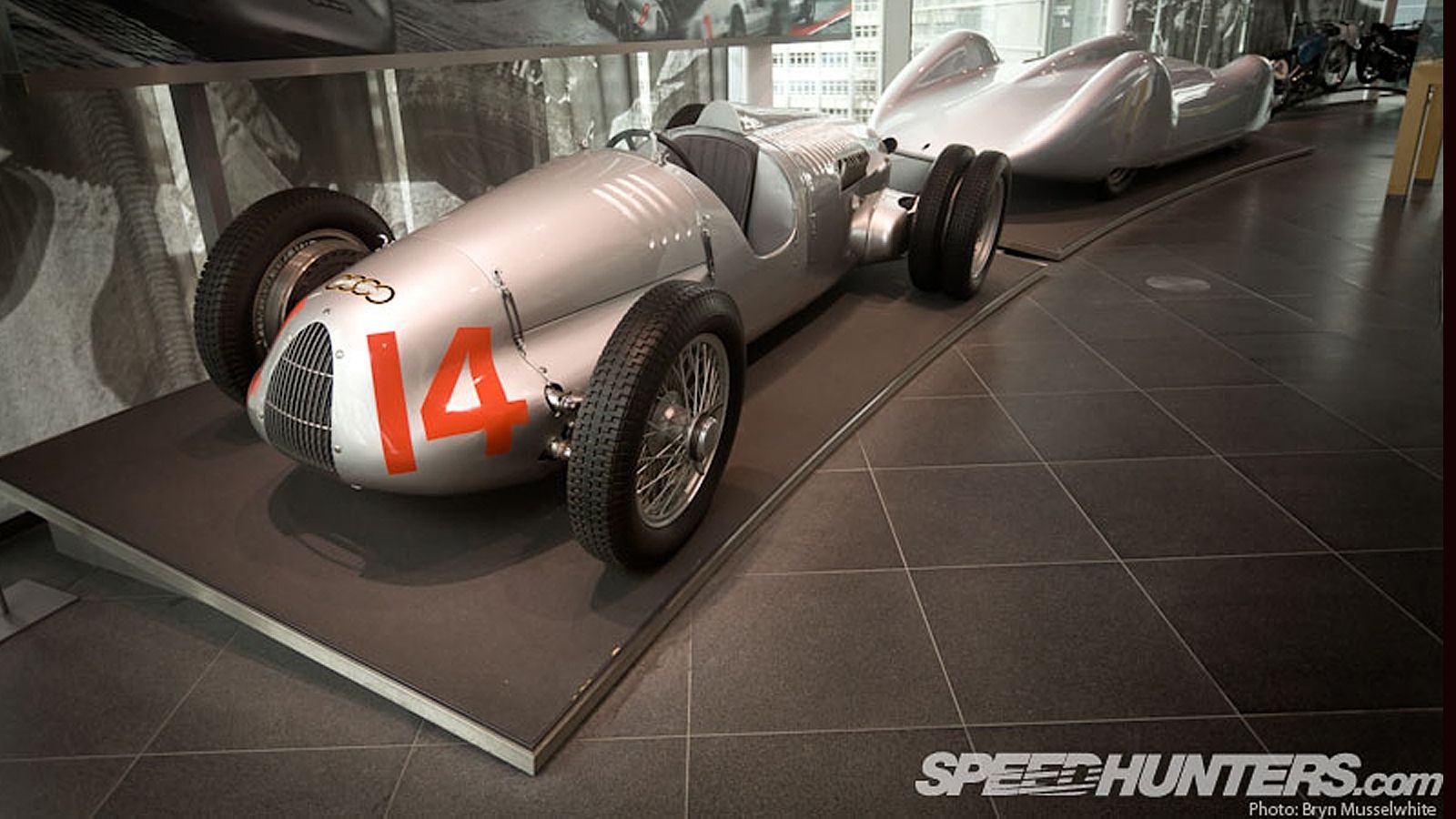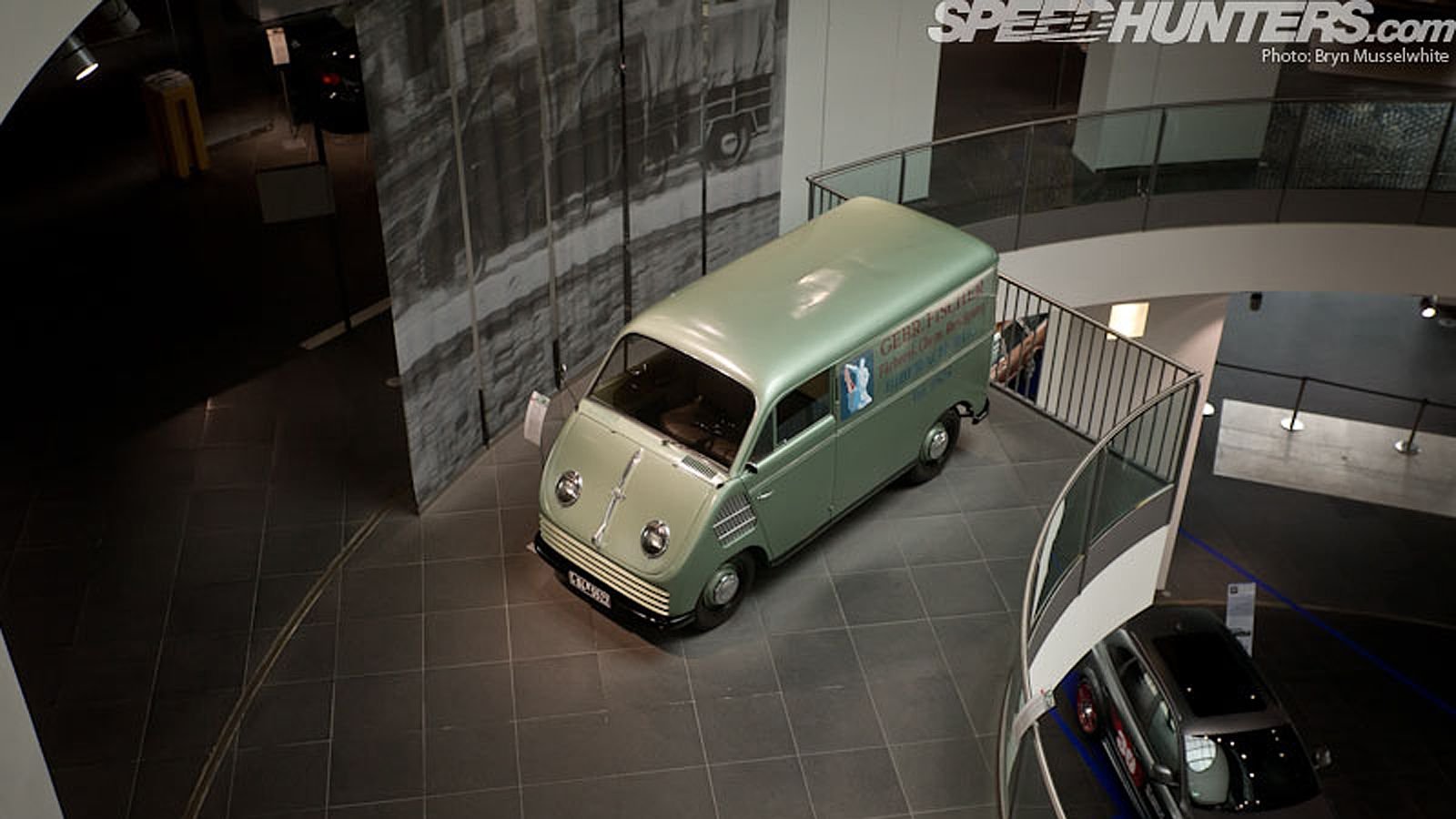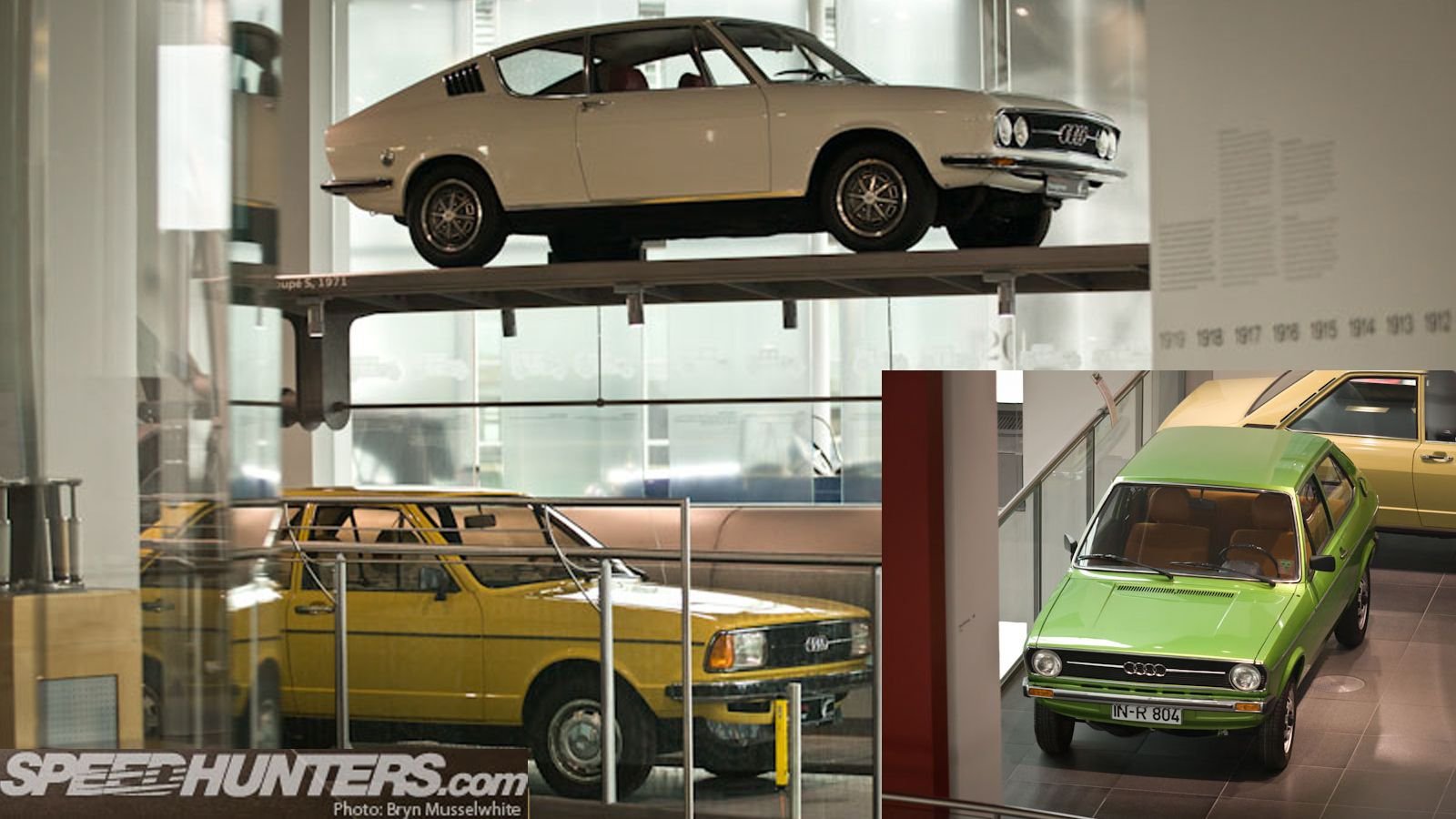Inside the Audi Museum
Slideshow: The Audi Museum brings together vehicles from a history that touches three separate centuries, and includes Horch, Wanderer, DKW, Auto Union, and NSU.






















Bavarian Rhapsody
When you enter Museum Mobile, Audi’s museum within the larger Audi Forum museum complex in Ingolstadt, Bavaria, Germany, you’ll encounter a reception staff rather than the ticket sales associates you might find in other automotive displays of this type. They are likely to gently guide you in the direction of a set of nearby doors that lead into the complex’s cinema. The short film presented gets raves from writers and helps set the stage for what you are about to see first hand upon leaving the theatre’s confines. The film, like the museum, ushers you through the history of Audi, its predecessors, and its siblings. Museum mobile, which opened in 2000, is laid out a bit like the Frank Lloyd Wright-designed Guggenheim in New York City in that it's circular with a hollow center, although the floors are conventionally stacked and not formed from a continuous spiral. The Gunter Henn-designed structure is over 72 feet tall and, in addition to other displays and temporary exhibits, is a permanent home to around 50 cars and 30 two-wheeled vehicles. One thing the Guggenheim doesn't have that Museum Mobile does is a 'paternoster' which, fitting in with the facility's name, keeps 14 cars in motion.
Audi Awakenings
Following the example of the museum cinema, a little background here will help set the stage for the variety of vehicles to follow. August Horch, after having worked for Karl Benz, decided to start his own concern in 1899. The company grew quickly and in 1904, Horch & Cie. Motorwagen Werke became a stock-issuing corporation. Only five years later, trouble with the board of directors led Horch to leave the company he started, and start over once again. Since Horch the company now owned Horch the man's name, he had to come up with something else. "Horch" means "hark" in German, so he translated that into Latin and the result, Audi, became the name of his new enterprise.
>>Join the conversation about the Audi museum right here in the Audi World Forum!
The Audi Family
Horch built Audi into a successful company, successful enough that the owner of DKW, Jorgen Skafte Rasmussen, bought a controlling interest in the firm. The global economic collapse of 1929 hit the German auto industry hard, and by 1932 Audi, Horch, Wanderer, and DKW merged in order to stay afloat. The resultant company, Auto Union, was symbolized by the four rings badge we know today.
Horch 855
This Horch 855 Special Roadster is one of seven made between 1938 and 1939. Its body was handbuilt by the Dresden coachbuilder Glaser, and its 120 hp 5.0-liter straight eight engine is good for an 87 mph top speed. We hope fuel prices were reasonable in 1939 because the 855 was using a gallon of gas every 11 miles.
Auto Union Type D
Perhaps the most storied car in the collection is this mammoth Auto Union Type D. It's mid-mounted engine produced so much torque that dual rear tires were called for. The car is famous for being a beast to control, and behind it sits a streamliner version of the Type C.
>>Join the conversation about the Audi museum right here in the Audi World Forum!
DKW
This pale green van, resembling a Beetle with its nose smashed in, is a 1950 DKW F89 L Schnelllaster, and as illustrated by the commercial livery this one is wearing, they became popular work trucks.
>>Join the conversation about the Audi museum right here in the Audi World Forum!
Auto Union 1000 SP
Not well known in the U.S., something that's true many of the cars on display, this Auto Union 1000 SP has more than a hint of '50s Ford T-Bird to its styling. This mini-bird was priced above the more pedestrian offerings from sister company DKW.
>>Join the conversation about the Audi museum right here in the Audi World Forum!
Audi 75
More changes came to the company in 1965, as Audi was absorbed into the Volkswagen Group. The 1965 Audi 75 pictured here was the predecessor of Audi's first 100, a FWD four-cylinder developed by Ludwig Kraus that paved the path for most of the Audis to come.
>>Join the conversation about the Audi museum right here in the Audi World Forum!
NSU RO80
In 1969, Volkswagen Group took control of NSU, and in doing so inherited the wonderful NSU RO80. The rotary-powered FWD R080 features disc brakes and an admirable Cd of only 0.36 and weighed in at a slight 2,6000 lbs.
>>Join the conversation about the Audi museum right here in the Audi World Forum!
Audis Also
Getting closer to the cars we know today, here we see a snappy 100 Coupe above an early model 80. The green hatchback would go on to be better known as the Mk1 Volkswagen Polo.
>>Join the conversation about the Audi museum right here in the Audi World Forum!
Iron Man
More than just modern models, the most recently produced Audis in the museum showcase a bit of the out-of-the-ordinary, such as this R8 convertible from the Iron Man franchise. With the company going strong we wonder if there are plans to add stories to the circular structure. The sky is literally the limit.
>>Join the conversation about the Audi museum right here in the Audi World Forum!
For help with servicing your Audi, check out the how to section of AudiWorld.com
